Image


New Jersey Governor Phil Murphy today announced a $25 million investment towards New Jersey’s Revolutionary War historic sites in preparation for the United States of America’s Semiquincentennial anniversary.
The Semiquincentennial anniversary, which will take place in 2026, will mark the signing of the Declaration of Independence and our nation’s 250th year of independence.
“New Jersey’s contribution to our nation’s independence is undeniable. From the battlefields where the tide of the American Revolution turned, to the many other sites where our nation’s identity was forged, New Jersey was arguably more deeply involved in the cause of independence than any other state,” said Governor Murphy. “As we celebrate our nation’s 250th anniversary, it is important that our historic sites are prepared to welcome the hundreds of thousands of visitors that will undoubtably travel from around the world to witness these sites in person on such a momentous occasion. This investment will allow us to revitalize our historic sites and make sure we are prepared when they come.”
The $25 million investment from federal American Rescue Plan funds will be allocated to the New Jersey Department of the Treasury and distributed to Revolution NJ, in partnership with the New Jersey Historical Commission and Crossroads of the American Revolution, to help in the restoration of the following Revolutionary War sites:
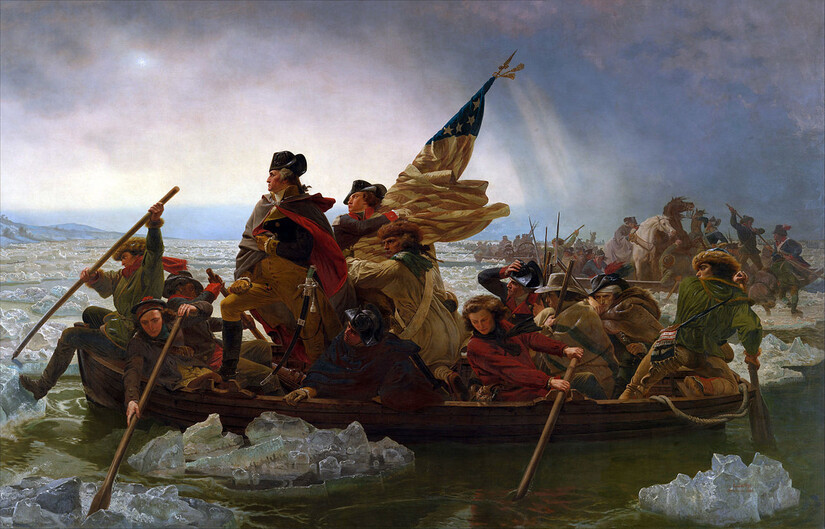 General George Washington’s historic crossing of the Delaware River
General George Washington’s historic crossing of the Delaware RiverWashington Crossing State Park is the site of General George Washington’s historic 1776 Christmas night crossing of the icy Delaware River. For almost ten hours, boats and ferries moved continuously back and forth carrying men, horses, and cannons to the Jersey side.
By midnight a strong storm had developed, hurling sleet, hail, and snow at the rebel army. Landing at Johnson’s Ferry, the Continental Army still faced an arduous nine-mile march to Trenton as the storm continued with a vengeance.
Reaching Trenton in the early morning of December 26th, the American Army surrounded, defeated, and captured over 900 Hessian mercenaries and secured a morale-boosting victory of immeasurable proportions.
“The 2nd reading of the Declaration of Independence in New Brunswick, the Battle of Monmouth, and the Crossing of the Delaware just a few steps from here which was pivotal in turning the tide of the war; New Jersey was indeed the crossroads of the American Revolution. I’m proud of my work on the Semiquincentennial Commission and passing the American Rescue Plan to ensure New Jersey’s contributions are recognized during the upcoming celebrations and that New Jersey received the funding it needs to tell its story,” said Congresswoman Bonnie Watson Coleman. “This includes the contributions of Black and Indigenous soldiers during the war. It was an integrated regiment who ferried Washington across the Delaware on Christmas 1776. By the end of the war a full quarter of the American soldiers marching to Yorktown were Black or Indigenous. Their contributions must be remembered as we celebrate the 250-year history of the Greatest Nation on earth.
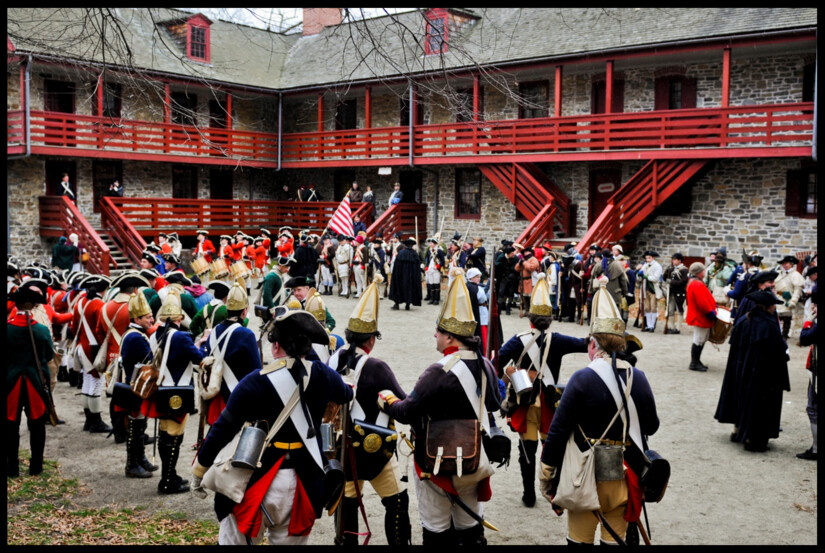 A reenactment at Trenton's Old Barracks
A reenactment at Trenton's Old BarracksThroughout the Revolutionary War, the Barracks were used for a variety of purposes by both the British and the Americans. British prisoners of war were held in the Officers' House, four companies of the Second New Jersey Regiment of the Continental Line were raised here, and in 1777 the Barracks became an army hospital under Dr. Bodo Otto, who oversaw smallpox inoculations for the Continental Army.
The Barracks, and Trenton, are most known for the events of December 1776. At the beginning of the month, British and Hessian troops occupied Trenton and briefly stayed in the Barracks prior to the Battles of Trenton. Colonists, loyal to the English king, also arrived, seeking protection from the soldiers, and were believed to be staying at the Barracks when Washington and his troops marched into Trenton on the morning of December 26th.
After the miraculously successful Battles of Trenton and Princeton, the Americans returned to Trenton in January 1777 and made use of the empty Barracks, primarily as the aforementioned hospital.
“New Jersey’s role in the American Revolution is unquestionably significant,” said Assembly Speaker Craig J. Coughlin. “The Battles of Trenton and Princeton singularly re-energized the fledging effort at perhaps the most crucial point of the war. Today’s sizable $25 million investment in capital upgrades across ten critical, state-owned sites marks a big step in the leveraging the full civic and economic potential of our state’s consequential revolutionary war history, not just in preparation for 2026 but for the years that lie ahead.”
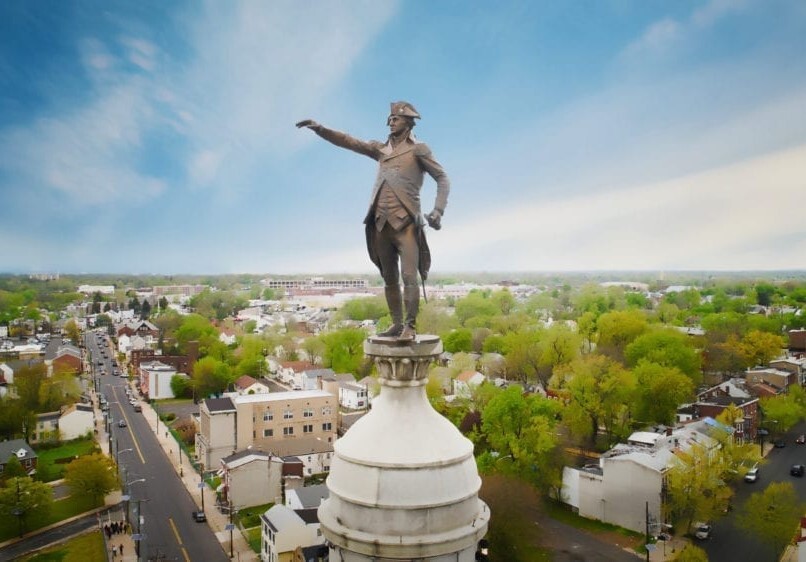 Trenton Battle Monument
Trenton Battle MonumentThe Trenton Battle Monument marks the site of the American artillery emplacement at the head of King (present-day Warren) and Queen (present-day Broad) Streets. These cannons commanded the two main North/South avenues of the city during the Battle of Trenton on December 26, 1776.
General Washington had attacked the three Hessian regiments garrisoned in Trenton around 8 a.m. after crossing the river at Johnson’s Ferry the previous night and marching approximately nine miles through a winter storm. After a short battle, General Washington could claim his first battlefield victory.
This victory boosted morale in both the Continental Army as well as the new nation often credited by historians as a turning point in the American War of Independence.
“New Jersey has a wealth of historic sites, many of which are located here in Mercer County where the ‘Ten Crucial Days’ of the American Revolution unfolded,” said Mercer County Executive Brian M. Hughes. “This investment allowing for much-needed improvements to our state’s historic treasures will help spotlight for the rest of the country the central role that New Jersey played in America’s fight for independence.”
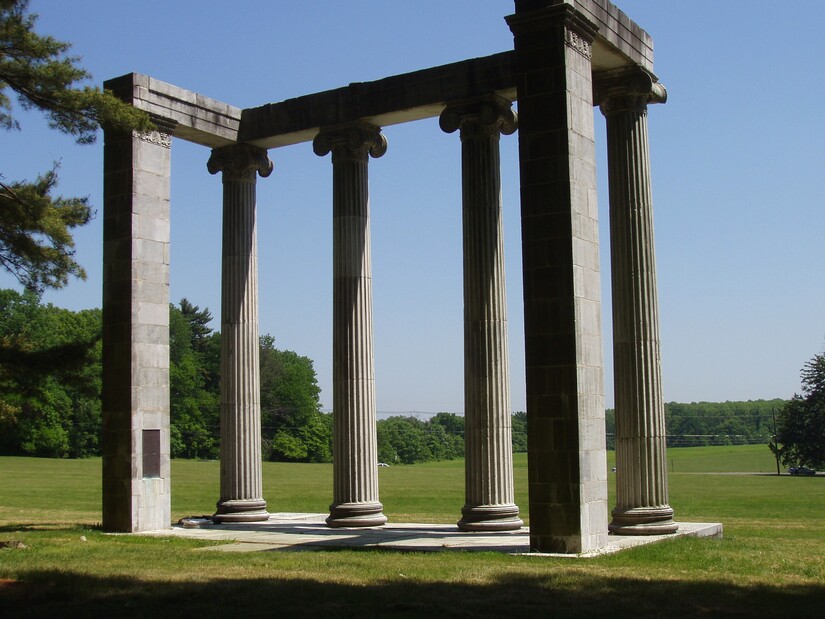 Princeton Battlefield State Park
Princeton Battlefield State ParkPrinceton Battlefield State Park held one of the fiercest battles of the American Revolution when American troops under General George Washington surprised and defeated a force of British Regulars on the morning of January 3, 1777.
American soldiers, pushed back by a strong British assault, were rallied by Washington who rode his horse between the British and American lines, leading his men to his first field victory over British troops. The Battle of Princeton capped 10 days of maneuvering and fighting, including three battles, which began with Washington’s famous December 25, 1776, crossing of the Delaware.
“Hopewell Township played an important role in the rich history of the founding of our country. With the 250th anniversary upcoming, this investment is critical to making New Jersey, and Hopewell Township, a heritage tourism destination,” said Mayor Courtney Mayor Peters-Manning.
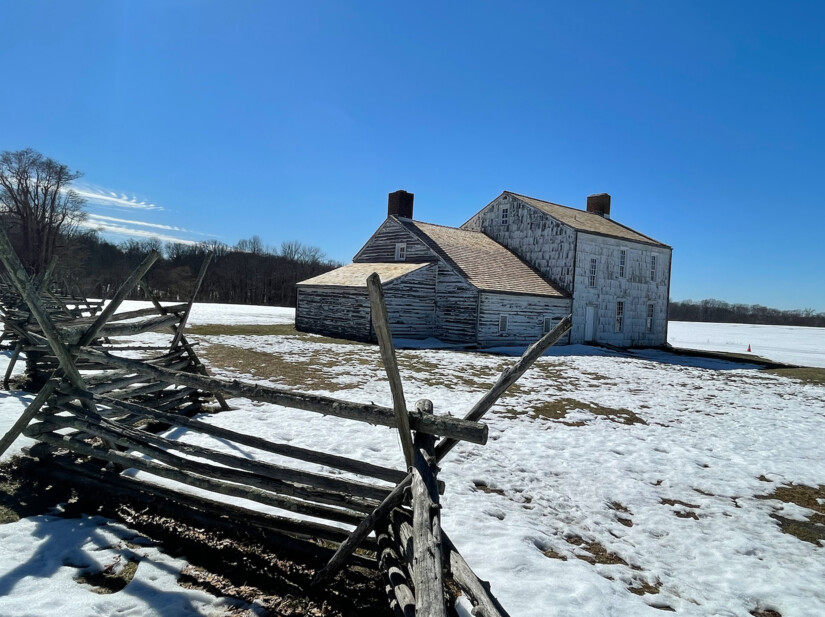 The Craig House, quartered as a hospital for British troops during the Battle of Monmouth.
The Craig House, quartered as a hospital for British troops during the Battle of Monmouth.On a blistering hot day on June 28, 1778, the land that is now Monmouth Battlefield State Park was the site of one of the longest battles of the American Revolutionary War. Here at Monmouth, Washington restored a reputation battered by defeats in 1777.
In the day-long battle in the hills, wood lots, farm fields, and meadows, the main Continental Army, retrained at Valley Forge, repulsed attacks by the main British Army. By the end, over 600 men were dead, dying, or wounded, and the Continental Army held the field.
“Crossroads of the American Revolution National Heritage Area is grateful for public funding for these key visitor readiness projects at sites which will serve as the initial core for Revolutionary War heritage tourism. This historic investment is only the first step in raising New Jersey’s profile as the acknowledged Crossroads of the American Revolution. As the fundraising arm of RevolutionNJ, Crossroads will be working to secure the participation of private donors to build on this crucial investment - to bring vital economic activity to our local communities by supporting and sustaining heritage tourism in New Jersey for the 250th anniversary and beyond,” said Carrie Fellows, Executive Director, Crossroads of the American Revolution Association.
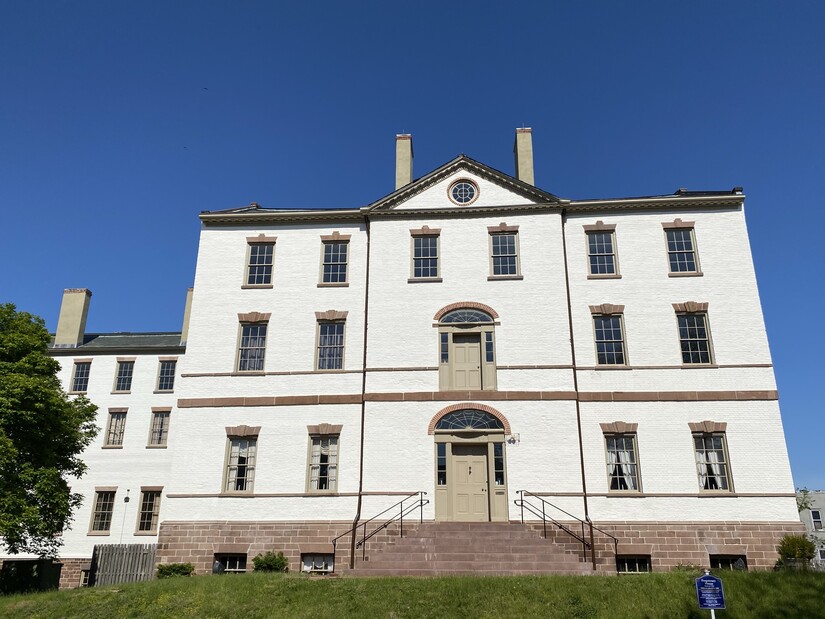 The Proprietary House.
The Proprietary House.Over the years, the Proprietary House has served as a residence to New Jersey's last Royal Governor, a stylish hotel, a private mansion, a retirement home, a boarding house, and now as office space and a museum.
Yet one of its most telling periods is when it served as the residence of New Jersey’s Royal Governor William Franklin, the illegitimate son of Benjamin Franklin. As Governor, he ran lotteries to fund roads and bridges, introduced an assistance program for farmers, and helped found Queens College, now Rutgers University. His loyalist leanings caused a rift between him and his father that was never reconciled.
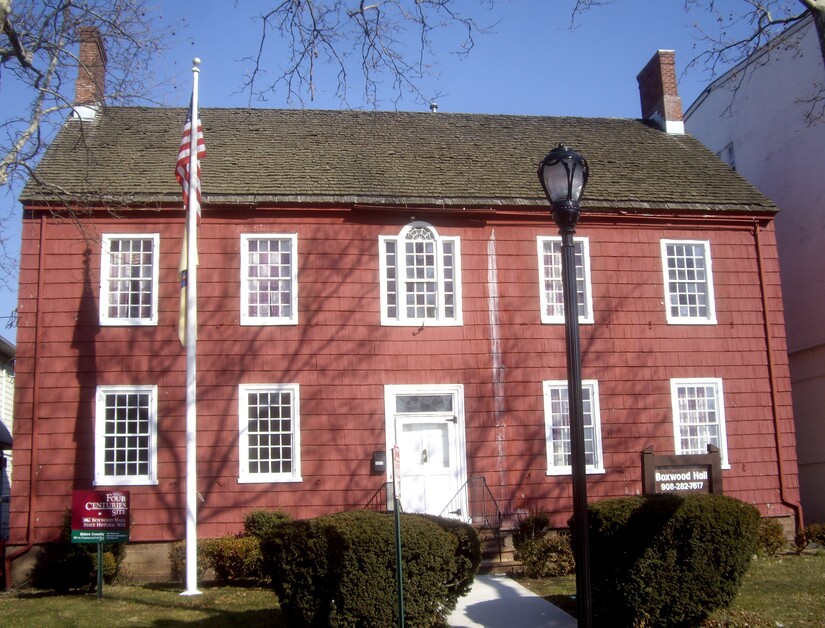 Boxwood Hall, home to Elias Boudinot, President of the Continental Congress
Boxwood Hall, home to Elias Boudinot, President of the Continental CongressBuilt for gracious living in about 1750, Boxwood Hall
was home to Elias Boudinot, President of the Continental Congress that ratified the Treaty of Paris, and Jonathan Dayton, the youngest signer of the United States Constitution.
Visitors included General George Washington, Alexander Hamilton, the Marquis de Lafayette, and Aaron Burr. Boxwood Hall was also home to Samuel and Elizabeth Woodruff, Hannah Boudinot, Susan Dayton, and their staff, both free and enslaved.
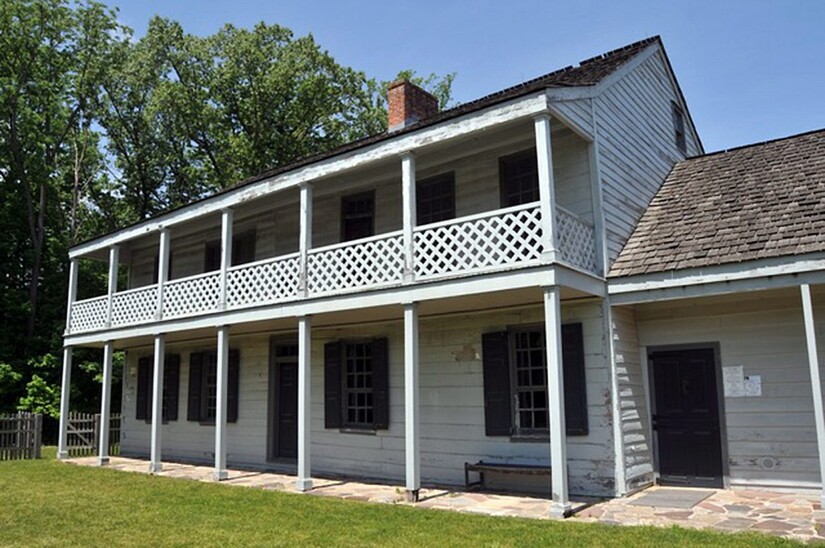 The Berrien Home, known as Rockingham
The Berrien Home, known as RockinghamAs the Revolutionary War came to a close with the signing of the Treaty of Paris in later 1783, General George Washington headquartered at the Berrien Home, known as Rockingham, while Congress met in nearby Princeton.
At Rockingham Washington wrote his “Farewell Orders to the Armies,” in which he expressed his deep admiration and appreciation of the Continental Army, acknowledging their accomplishments and many hardships and, most importantly, turned aside from the great power he had been given as commander in chief, allowing the newly minted United States to develop as a democracy.
It's Giving Tuesday! Donate to a good cause!
Our reporters will be dedicating time and resources to investigating the roadblocks to mental health accessibility in our town.
Donate to Morristown, NJs local mental health accessibility fund today!
 Scan the QR code to donate!
Scan the QR code to donate!*The 2022 Local News Fund is a program administered by the Local Media Foundation, a 501(c)(3) organization affiliated with the Local Media Association. The program’s purpose is to allow independent and family-owned news organizations to solicit tax-deductible donations from their communities for journalism projects focusing on critical local issues. Contributions to this program are tax-deductible to the full extent of U.S. law; please consult a tax advisor for details.